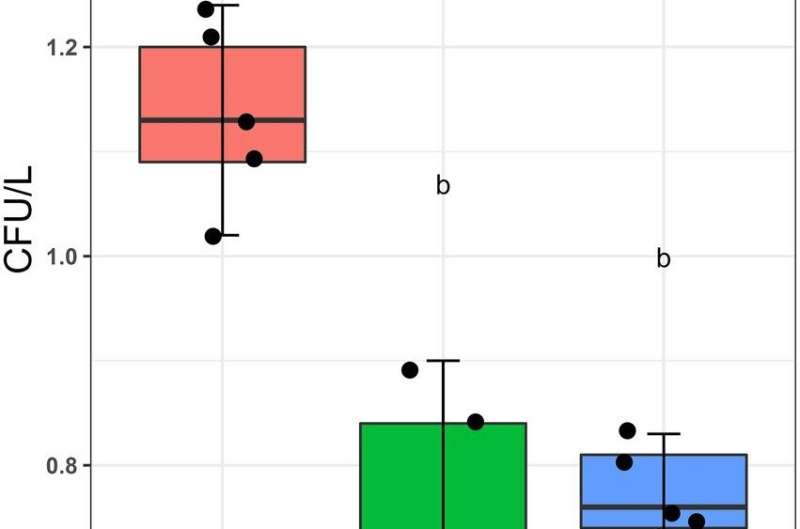This article has been reviewed according to Science X's editorial process and policies. Editors have highlighted the following attributes while ensuring the content's credibility:
fact-checked
peer-reviewed publication
trusted source
proofread
Water tests may fail to detect Legionella

Like false-negative results for virus testing, Flinders University experts have found that standard testing for Legionnaires' disease is not always failsafe.
To counter the problem, the environmental health and microbiology scientists have devised a more reliable and effective method to test for the bacterium Legionella pneumophila, particularly when the bacteria is "hidden" by environmental stressors such as heat or disinfectant in engineered water systems.
Legionnaires' disease, a pneumonia-like infection that can be fatal, is caused by L. pneumophila when transmitted by inhalation or aspiration of contaminated water aerosols from water systems.
About 500 cases are reported a year in Australia, but many more may go unconfirmed, say the Flinders experts, after recently finding more than 40% of drinking water tested positive for L. pneumophila.
The Flinders University research found that the standard protocol to test for the pathogen Legionella is not always accurate under certain conditions and can result in false-negative results in the presence of environmental stressors.
Under conditions, affected by low water nutrients, disinfectant and high temperatures, Legionella bacteria enter a state called "viable but non culturable" (or VBNC) and are still alive and infectious—while not being able to be detected by standard testing, explains Ph.D. candidate Muhammad Atif Nisar who conducted the study.
"As well, we found that the decontamination steps, which are part of the standard detection method, can actually cause Legionella to transform into this VBNC state in which they cannot be detected."
"To rectify this, we have developed a new method to study VBNC Legionella which otherwise would not be detected in environmental samples," he says.
The findings have just been published online in Frontiers in Microbiology.
"People conducting water testing for Legionella may be getting false-negative results," says co-author Associate Professor Harriet Whiley.
"This may lead them to wrongly believe that their system is free from Legionella or may lead them to have overconfidence in a particular control method.
"We hope this new method will lead to better control strategies to prevent Legionnaires' disease," she says.
More information: Muhammad Atif Nisar et al, Detection and quantification of viable but non-culturable Legionella pneumophila from water samples using flow cytometry-cell sorting and quantitative PCR, Frontiers in Microbiology (2023). DOI: 10.3389/fmicb.2023.1094877
Journal information: Frontiers in Microbiology
Provided by Flinders University




















